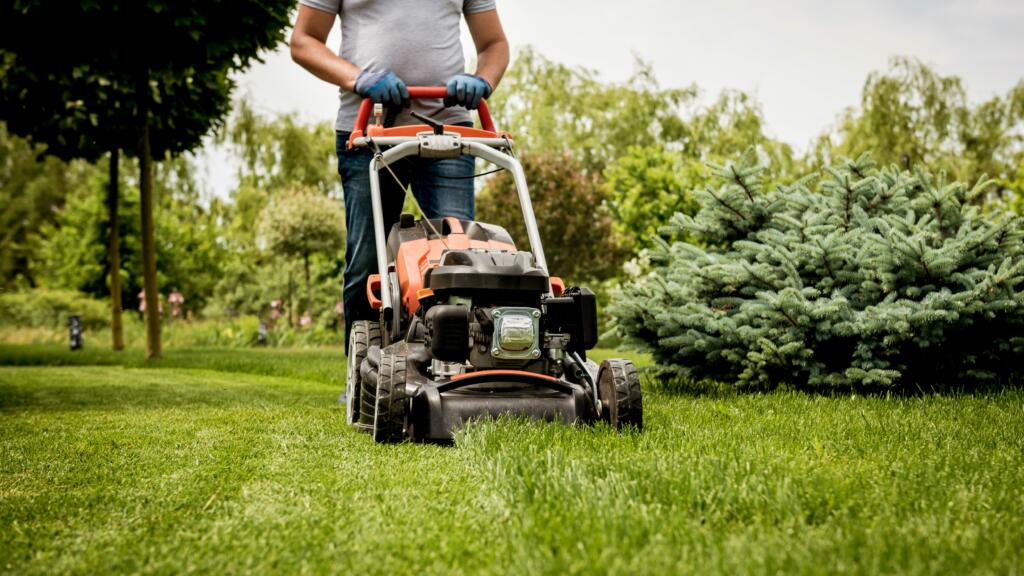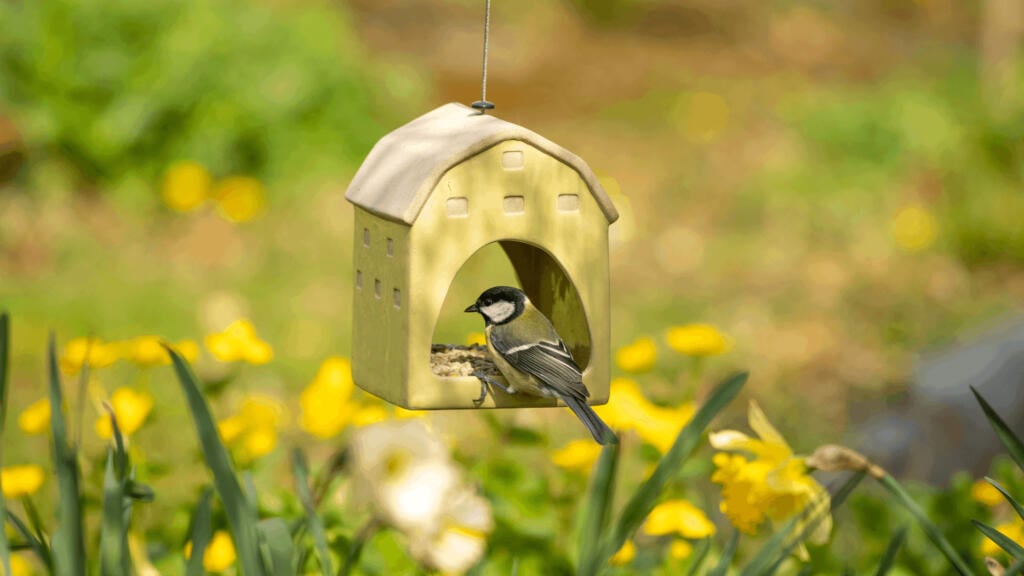
Is artificial grass right for your garden? We explore the pros and cons
Rosanna Spence
Can’t wait to see the back of these golden weeds? After reading this, you might change your mind.
Dandelions are a familiar sight in our gardens. But how do you feel about them? To many gardeners, the sea of golden faces springing up is a welcome sign that winter is over. It means that the grass is growing again and is probably abundant with insect life. For others, the explosion of sunny petals is a real nuisance.
Dandelions are a familiar sight in our gardens. But how do you feel about them? To many gardeners, the sea of golden faces springing up is a welcome sign that winter is over. It means that the grass is growing again and is probably abundant with insect life. For others, the explosion of sunny petals is a real nuisance.
 Credit: Lars Nissen from Pixabay
Credit: Lars Nissen from PixabaySo, if you want to know how to kill dandelions, we’ve got your back. But before you reach for the weedkiller (or the lawn mower, and make one of these grass-cutting mistakes), read on and find out why you might want to at least wait until the plant has finished flowering.
These weeds are able to generously spread themselves around a garden, so if you want to know how to kill dandelions, it’s best to consider a two-pronged approach.
We asked Boyd Douglas-Davies, of British Garden Centres, to explain the most effective ways to get rid of dandelions from a lawn, and how to stop them returning.
“One way is to pull up the dandelions by the root, as this will not harm the grass or other plants around them,” he says. “Use a weeding knife and remove the entire main taproot. We recommend doing this when the soil is warm and moist. Dandelions have long roots, so it’s essential that these are removed to stop the plant from growing back.”
The pronged blade of a weeding knife helps to effectively reach those long roots.
“Never throw your weeds in the compost bin,” warns Angharad James, product manager at Phostrogen. “They may grow and cause serious issues for your beds and borders further down the line.”
 Credit: Shutterstock / Dean Clarke
Credit: Shutterstock / Dean ClarkeThough some gardeners like to minimise the chemicals they use on their land, when you’re dealing with stubborn weeds it can feel like you’re left with no choice but to use weedkiller.
If your lawn is experiencing problems with dandelions, British Garden Centres advises using a triple-action lawn fertiliser and weedkiller. This will kill weeds and their roots (check that dandelions are on the list), as well as any moss, as this can also be a problem with lawns. The fertiliser will also help to make the grass greener and more luscious.
Remove any weed remnants and dead, blackened moss with a lawn scarifying rake. Then reseed any bare patches with grass seed. Read our guide on how to plant grass seed successfully. Your lawn should now be free of dandelions.
If you’re just looking to kill localised dandelion flowers, British Garden Centres recommends tackling them with Weedol Rapid Weed Killer. Get the type that’s ready to use and is pet and child safe once dry.
Waste not, want not
If you’re uprooting dandelions in your garden, and aren’t using weedkiller, then why not put the plants to use? Seeing as you won’t want to pop them on your compost heap, there are ways you can avoid throwing these useful plants in the bin.
The young leaves can be eaten in a salad, while the yellow petals can be used to make a wine that’s similar to mead, as well as a champagne-style drink, tea and syrups. Its roots can be ground to make a decaffeinated ‘coffee’, too.
Here is a useful guide on when to harvest dandelions, and how to use them in the kitchen.
 Credit: Shutterstock / Halfpoint
Credit: Shutterstock / HalfpointIf you really hate dandelions and are tired of relentlessly pulling them out of your lawn, then prevention is better than cure.
“The best way to conquer dandelions long term is to have a healthy lawn,” says Peter Chaloner, managing director of Cobra Garden. “There are quick fixes to remove the immediate problem, but without changing the conditions they will most likely just come back time and time again.
“A good lawn care regime of scarifying, aerating and mowing will prevent any dandelions and have lawns thriving.”
If you are mowing your lawn regularly, Chaloner advises you follow the ‘one-third rule’. This means only removing one third of the grass blade height at any one time.
“Cutting more than this weakens the plant and creates a shallow root system that will cause more problems in the future,” he adds. “Make sure you attach the grass bag as well to catch the cuttings and seeds and stop the dandelion seeds from spreading further.”
As dandelions are less likely to call a healthy lawn their home, improving the quality of your grass is vital, and we’ve sourced some expert tips to help…
“The first step to reviving your lawn is to collect the dead leaves that may have fallen from surrounding trees throughout the winter,” says Angharad James at Phostrogen. “Leaving debris to sit on the lawn can prevent oxygen reaching the soil and impede proper drainage.
Put any dead organic matter onto the compost pile to break down – in time, this will create humus, a rich nutrient-filled material that will enrich your soil and plants.”
Of course, also inspect the grass for weeds and remove any unwanted growth.
Next, James suggests you aerate your lawn by creating small holes in the ground to help water, nutrients and oxygen to reach the root system. This will encourage better growth and general good health, as well as prevent lawns from becoming waterlogged.
James says that aerating is particularly important if soil is compacted, as this will prevent air circulation and water flow. Depending on the size of your lawn, there are a variety of tools you can use to aerate, including a garden fork, a slitter, or a corer.
“Many lawns may have developed bald patches throughout winter due to the poor weather conditions and low light, so now is a great time to fill in any affected areas by applying grass seed,” explains James. “Simply spread potting soil by hand on the damaged lawn, brush with a soft plastic rake to distribute the soil, sow seeds in the affected area and tamp the earth down with a shovel, before watering lightly.”
Lawns benefit greatly from being fertilised throughout the year. James advises opting for a specialist organic lawn feed to enrich the soil with the perfect balance of nutrients needed to grow a thicker, greener and more durable lawn.
“Spread the lawn food evenly and uniformly, either by hand or a suitable spreader such as a garden sprayer, and water thoroughly after application,” she says. “Lawn food should be applied three times a year, between March and October when the grass is actively growing, and lawns should be watered more regularly, particularly during the summer months.”
Top dressing is something you can do a couple of weeks after using a fertiliser if you’re really keen for your grass to grow, according to Chris Bonnett, founder of Gardening Express.
“Mix together materials like sand, soil loam and peat, and apply this to your dry grass,” he explains. “The materials will transfer nutrients back into the soil and promote growth.”
“Similar to top dressing, an easy way to promote grass growth is to leave the remaining grass clippings on your grass after mowing,” says Bonnett. “This way, the clippings decompose and transform healthy nutrients that promote growth back into the soil, keeping your grass healthy.”
 Credit: Pexels / Marek Levak
Credit: Pexels / Marek LevakFor those of you who may feel a pang of guilt, but still feel you need to kill dandelions, before you reluctantly head outside with your weeding knife, consider if they need to be removed immediately.
“Leave dandelions to finish flowering before any mowing,” suggests Boyd Douglas-Davies of British Garden Centres. “Cherish and encourage these wonderful plants that are so important to our pollinating insects.”
Campaigns like Plantlife’s No Mow May and Wild About Gardens (a joint effort from The Wildlife Trusts and RHS) are encouraging people to let their lawns grow longer. This is to improve the environment in your outside space for the pollinating insects needing food during the warmer months. It is also supporting the food networks and lives of other creatures visiting your patch.
The message from Wild About Gardens in particular has been to encourage gardeners to “champion dandelions and other wildflowers by letting lawns grow longer”.
 Credit: Benjamin Grenier on Unsplash
Credit: Benjamin Grenier on Unsplash There are 239 dandelion microspecies recorded in Britain and Ireland, according to The Wildlife Trusts, and 58 of those are endemic. This means that they are only found in the British Isles.
Dandelions are central to garden ecosystems, supporting more than 50 different species of insects, including bees, moths, flies and wasps. Garden birds then feed on some of these insects, so of course dandelions help to establish this food chain.
Even the fluffy seed heads of dandelions provide food for birds such as sparrows and goldfinches.
The Wildlife Trusts says that by avoiding frequent mowing, you’re giving dandelions and other wildflowers such as daisies, selfheal (Prunella vulgaris), lesser celandine (Ficaria verna), cowslip, and bird’s-foot-trefoil (Lotus corniculatus) a chance to grow and flower, providing nectar and pollen for pollinators.
Alison Steadman, actress and ambassador for The Wildlife Trusts, has been vocal about the importance of leaving lawns to grow long, and allowing flowers like dandelions to flourish.
“Longer lawns offer birds the perfect foraging spots, especially when there are plenty of wildflowers in amongst the grass,” she says. “One of my favourite animals is the hedgehog. What better way to make them feel welcome than a luscious patch of grass and wildflowers to hunt for worms and beetles? I do hope you’ll join me in freeing your lawn and letting golden dandelions flourish for a splash of colour.”

Written by Rosanna Spence she/her
Published: Updated:
Rosanna Spence has been a journalist for nearly 10 years, reporting on a huge array of topics – from microwaves to cocktails, sustainable buildings, the Caribbean islands and beyond. She’s interviewed chefs at the helm of Michelin-starred restaurants and chatted to countless CEOs about their businesses, as well as created travel guides for experienced travellers seeking life-changing adventures. Throughout her career, she has created content for Business Traveller, i-escape.com, Pub & Bar, BRITA, Dine Out and many more leading titles and brands.

Rosanna Spence

Rosanna Spence

Rosanna Spence

Rosanna Spence